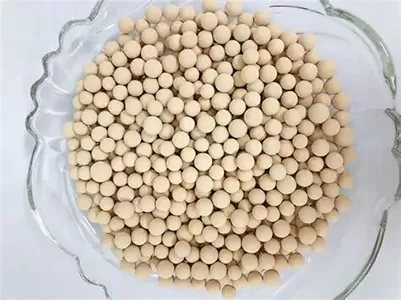molecular sieve adsorption pressure is tailored to specific uses, balancing efficiency and energy needs. For common drying applications with 3A or 4A molecular sieves, pressures usually stay between 0.1 and 0.5 MPa. This range effectively drives water molecules into the sieve’s pores without excessive energy input, ideal for processes like compressed air drying.

In gas separation, such as nitrogen production with 13X or carbon molecular sieves, higher pressures (0.6 to 1.0 MPa) are typical. The increased pressure enhances the adsorption of smaller molecules like oxygen, improving the separation efficiency from nitrogen in PSA systems. Here, the packing density of the molecular sieve in columns also influences pressure requirements—denser packing may need slightly higher pressure to ensure uniform gas distribution.
Lower pressures (below 0.1 MPa) are sometimes used for delicate separations, where minimizing molecular damage is critical. Regardless of the range, pressure is often paired with temperature control to optimize adsorption: higher pressure can offset reduced adsorption at elevated temperatures, ensuring consistent performance of the molecular sieve across varying industrial conditions.

